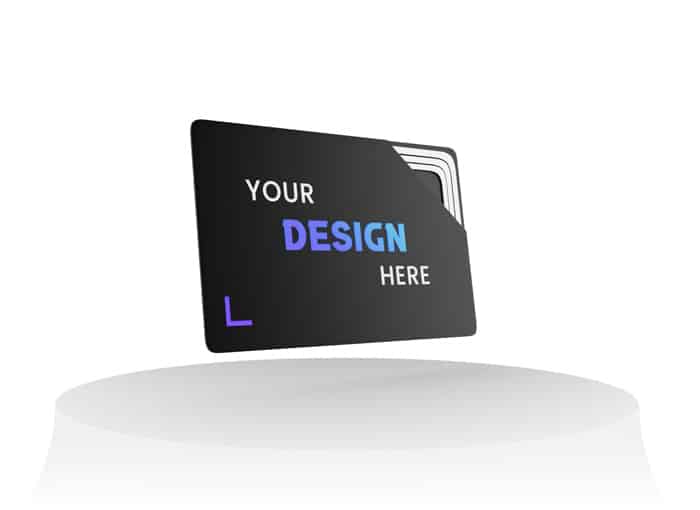
RFID vs NFC: What are the differences between these two remote exchange technologies?

In today’s digital age and increasingly connected world, who hasn’t heard of NFC and RFID technologies ? Yet do you really know what these technologies are based on and how they work? VKARD takes you on a tour of the subtleties of these technologies, which are increasingly used on a daily basis!
The acronym RFID (Radio Frequency Identification) is used to refer to a wireless technology that uses tags equipped with electronic chips, enabling interaction over varying distances.
NFC (Near Field Communication) is in fact an extension of RFID technology. This technology differs in terms of range, applications and functionalities.
Although both technologies are used to transmit and receive information, there are a number of differences.
How RFID (Radio Frequency Identification) works :
RFID systems use tags fitted with microchips that store data and communicate with RFID readers via radio waves. When a signal is emitted, nearby RFID tags are able to pick it up and transmit the data stored in the tag.
RFID systems can operate over long distances, from a few centimeters to several meters, depending on the type of RFID used. The range of this technology is between 25 and 100 m.
When is RFID technology used?
RFID technology is found in large-scale installations such as businesses and toll booths. It facilitates inventory management, as well as access control, as in badge-based opening systems in companies, for example.

A high-performance security system
RFID systems are based on high-performance security, thanks to strict protocols designed to protect stored data.
NFC (Near Field Communication):
NFC technology is an extension of RFID technology, enabling the exchange of data between two NFC-compatible devices when they are placed close to each other. NFC is a short-range technology used in smartphones in particular. This technology is used by VKARD for digital business cards.
This new technology is based on very short-range communication between two devices, which nevertheless enables higher frequencies to be received. It works thanks to NFC chips embedded in the devices, which emit radio waves. When a device is placed close to another NFC device, the chips communicate with each other, enabling instant data exchange.
When is NFC technology used?
NFC technology is best known for contactless payment. In fact, your smartphone is probably equipped with an NFC system enabling contactless payment! It’s also the case for credit cards and certain connected watches.
Thanks to this new technology, consumers can pay for their purchases simply by bringing their device close to an NFC-compatible payment terminal.
NFC technology is also being used for marketing and sales purposes, notably by integrating it into billboards, restaurant cards and posters. By scanning these, consumers gain access to new product information. This technology is therefore highly appreciated by companies wishing to promote their business in a digitalized way.

Limited reach
NFC technology differs from RFID technology in its short range (around 25cm). In fact, it is mainly used for close interactions, such as sharing information between smartphones.
The advantage of this limited range is the enhanced security it brings.
At VKARD, NFC-enabled digital business cards make it easy to interact with customers and prospects. You can use it to share your contact details, external links, visuals or videos securely and instantly.
What’s more, you can choose to modify your business data at any time, guaranteeing an up-to-date business card in real time. Efficient, reliable and practical, the digital business card makes the environmentally unfriendly paper business card obsolete, and proves to be a real asset in an increasingly connected world.
Despite their similarities, RFID and NFC technologies differ in scope, applications and functionalities. Increasingly used by professionals, these practical and reliable technologies facilitate data exchange and open up new business opportunities for entrepreneurs! The choice between RFID and NFC will depend on your specific needs and projects.
Written by Camille BODET
The digital business card is a real ally for professionals wishing to promote their business effectively and instantly. In the...Lire la suite
VKARD is an innovative and effective solution to help all professionals stand out from the crowd and reinforce their brand...Lire la suite
If you prepare properly for a job interview, you'll have every chance of winning over the recruiter and getting the...Lire la suite
LinkedIn is a world-renowned business platform, and for good reason! Thanks to its many networking options, LinkedIn is the tool...Lire la suite
Find out how Leexi AI optimizes the management of videoconferences and business calls, saving time and improving efficiency.
In the professional sphere, it's vital to know how to convey certain strong values in order to stand out and...Lire la suite
Mastering the art of conversation is a real asset! By mastering the subtle art of conversation, you'll be able to...Lire la suite
Are you taking part in a trade event and want to do everything you can to make a good impression?...Lire la suite
CRM (Customer Relationship Management) represents a genuine corporate strategy for managing business contacts. This popular tool for professionals is in...Lire la suite
At a time when the professional world is in a perpetual state of competition, we might wonder what place altruism,...Lire la suite















